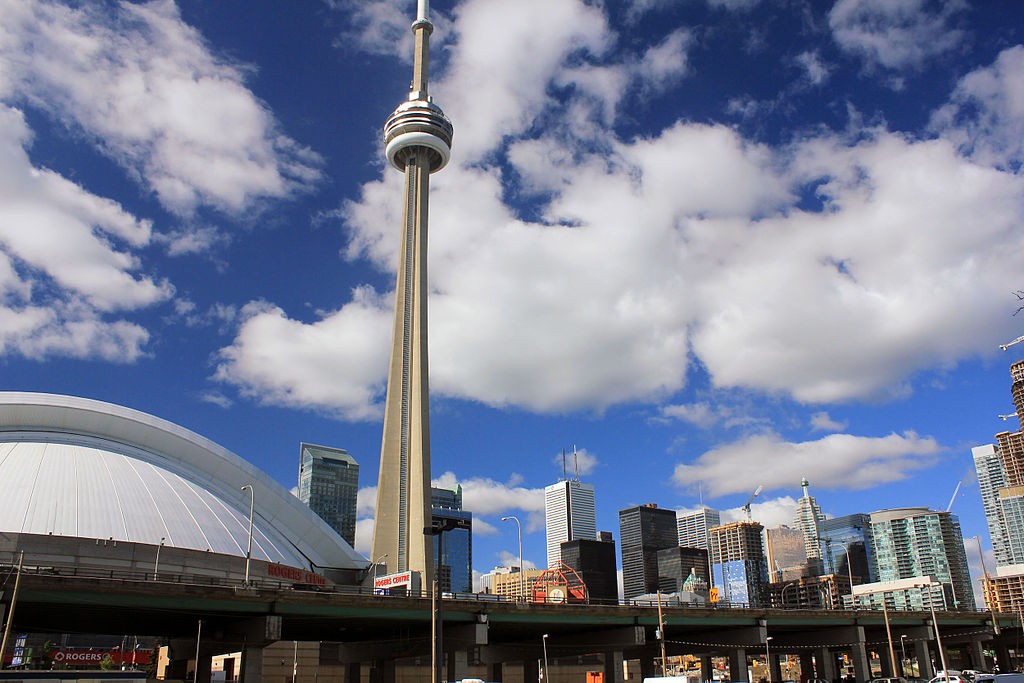How was the CN Tower built?
Toronto’s most iconic structure officially opened on June 26, 1976. Here’s how it came into being.

Picture a family driving into Toronto from parts unknown. A familiar question from the back seat begets the following snippet of conversation:
“Are we there yet?”
“No.”
“How close are we?”
Let’s shut this down, shall we?
“Can you see the CN Tower?”
“… No.”
“Well then, we’re not that close.”
Among its other achievements, the CN Tower is the structure that solved “Are we there yet?” At 553.3 m tall and located near the waterfront, it’s visible from anywhere in the city — and well beyond it.
In other words: If you can’t see it, you’re not close.
Tonight the #CNTower will be lit red, black and green for #BlackHistoryMonth / Ce soir la #TourCN sera illuminée en rouge, noir et vert pour le Mois de l'histoire des Noirs pic.twitter.com/6HQNosgvve
— CN Tower / Tour CN (@TourCNTower) February 1, 2023
The birth of the CN Tower
Crews officially broke ground on Feb. 6, 1973, and the tower opened little more than three years later on June 26, 1976. At the time, it was the world’s tallest free-standing structure — a record it would hold until 2007 when Dubai’s Burj Khalifa surpassed it.
According to a Toronto Star souvenir magazine published around the opening, it also boasted the world’s highest elevator ride (1,450 ft.) and longest concrete staircase (2,570 steps).
But how was it constructed? Who was behind the tower’s creation, and what kind of architectural wizardry did it require, particularly as the building process pre-dated computer design technology?
The YouTube channel Art of Engineering did a deep dive on this very subject, and it’s a fascinating look at these questions and more. Check it out:
How long will the CN Tower last?
All these years after its contruction, and even after it lost its Guinness Book of World Records top spot, the CN Tower is still one of the most popular tourist destinations in Toronto, and easily the focal point of the city skyline.
And as the video above states in its final seconds, the iconic structure is expected to last 300 years, meaning it should be around and helping with wayfinding — not to mention shutting down “Are we there yet?” — well into the 2200s.
This is an updated version of an article originally published in 2022.
Code and markup by Chris Dinn. ©Torontoverse, 2023